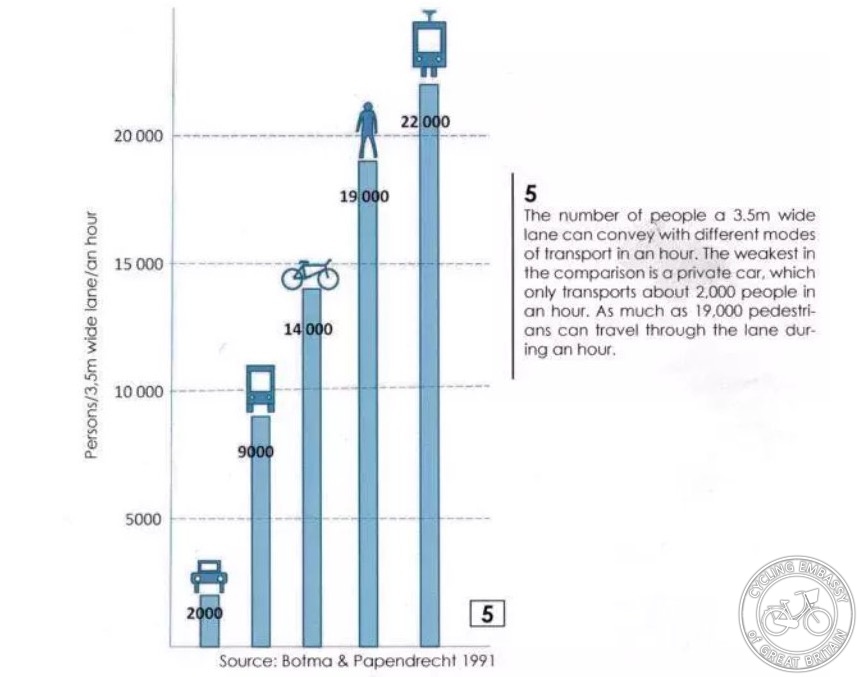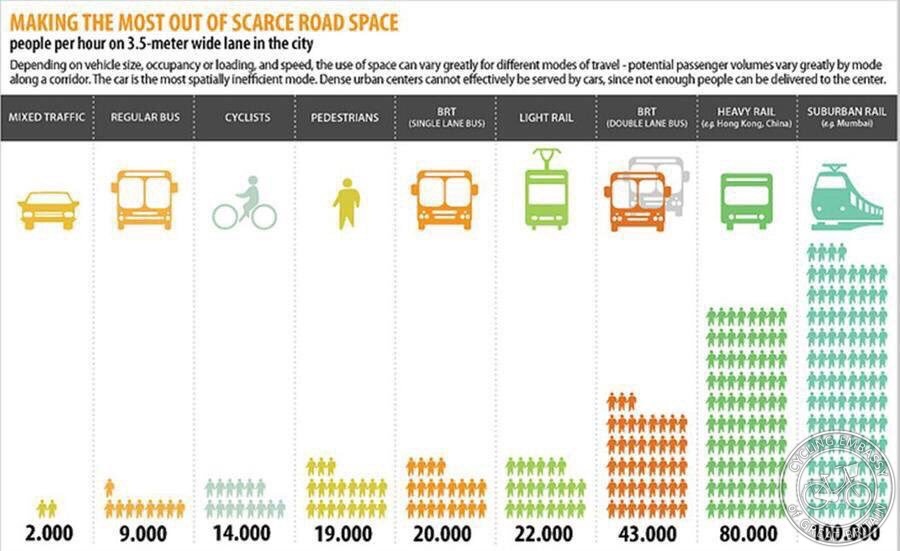Capacity
In highway engineering, capacity refers to the ability of a road or street to carry motor vehicles (or, more importantly, people). Flow capacity is the number of vehicles (or people) passing a given hypothetical perpedicular line across a road, street, or lane.
A 3.5m motor traffic lane can carry around 2,000 people per hour, assuming typical urban car occupancy rates. That same 3.5m, allocated to cycling, can carry at least four times as many people per hour, perhaps even seven times as many - 14,000 people per hour.


In other words, cycling infrastructure is a much more efficient way of moving people around than space allocated to motor traffic. A concrete example is the protected cycleway on Blackfriars Bridge in London, which moves nearly 2,000 people per hour in just one direction in the morning peak (i.e. within 2m of width), compared to just 1,542 people carried in the adjacent two traffic lanes, meaning the cycleway is 5x more efficient at moving people.
